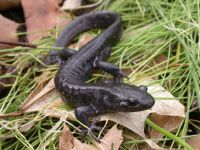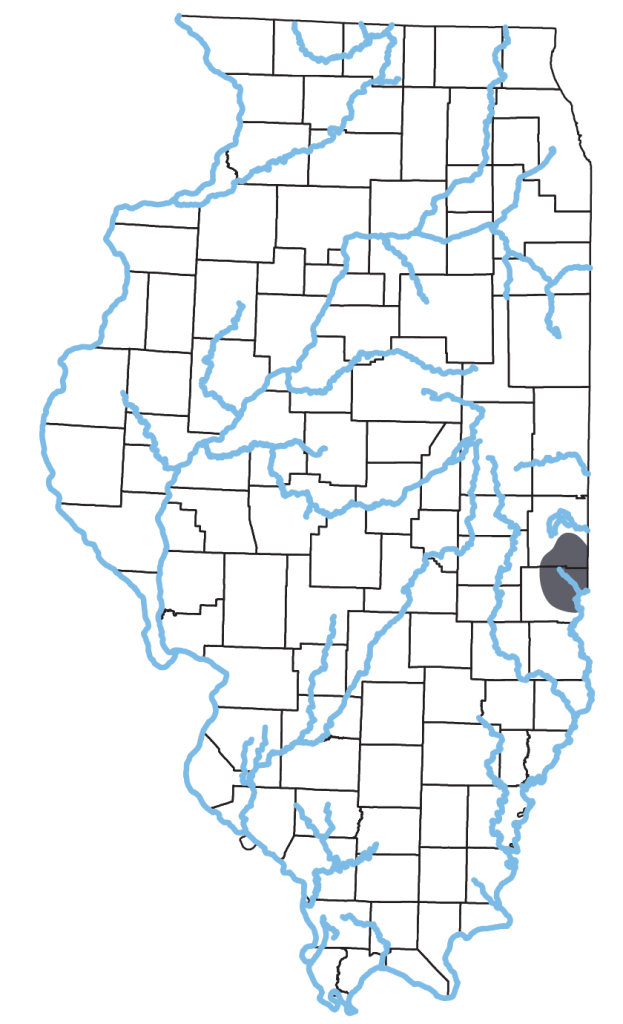Ambystoma jeffersonianum (Green, 1827)

Similar Species: Blue-spotted Salamander, Silvery Salamander, Slimy Salamander, Small-mouthed Salamander. See Key to Adult and Larval Salamanders of Illinois for help with identification.
Key Characters: Long, slender toes; broad snout; no nasolabial grooves; wide head; belly paler than sides and back; cloacal opening surrounded by gray.
Subspecies: None are recognized.
Description: A long (up to 17 cm TL), brown or dark gray salamander with spindly limbs. Head distinctly wider than those of Blue-spotted and Small-mouthed salamanders, snout relatively longer and broader, and legs and toes longer. Adpressed limbs overlap by 2-4 costal folds. Costal grooves 12-13. Cloacal walls of breeding male greatly swollen with glands that produce spermatophores. Larva has a large head, un-pigmented throat, long, slender toes, and intensively pigmented tail fin.
Habitat: Upland deciduous forest, especially beech-maple forests of extreme eastern Illinois.
Natural History: Subterranean adults are seldom seen outside of the breeding season, but may occasionally be found in leaf litter or under logs. Diet includes beetles, centipedes, slugs, worms, and other invertebrates. During February-March rains, adults migrate several hundred meters to congregate and breed in scattered vernal woodland ponds or fish-free permanent ponds. The 180–210 eggs (2–2.5 mm diameter) enclosed within jelly-like masses (usually 14–22 eggs per mass) are attached to twigs and stems in water. Eggs hatch in less than a month and larvae remain in pond 2–3 months where they prey on invertebrates and other amphibian larvae. Predators of adults include skunks, raccoons, and snakes.
Distribution Notes: First found in Illinois in 1990 at a single pond in Edgar Co., it is now known to occur at several localities in the Wabash Border Natural Division, but is still restricted to Clark and Edgar counties. The Silvery Salamander, A. platineum, is known from Vermilion and Crawford counties, the two counties north and south of Clark and Edgar. Extensive field work has been conducted in these four counties with no syntopy documented.
Status: Threatened in Illinois.
Etymology: Ambystoma – amblys (Greek) for blunt; -stoma (Greek) meaning mouth; or anabystoma (New Latin) meaning ‘to cram into the mouth’; jeffersonianum – dedicated to Jefferson College, originally in Cannonsburg, PA, but moved to Washington, PA in 1868, and later renamed Washington & Jefferson College.
Original Description: Green, J. 1827. An account of some new species of salamanders. Contributions of the Maclurean Lyceum 1(1):3-8.
Type Specimen: Not designated, but probably includes USNM 3968, collected by Jacob Green, date unknown.
Type Locality: “Near Chartier’s Creek in the vicinity of Jefferson College at Cannonsburg” = Washington Co., PA, USA
Original Name: Salamandra jeffersoniana Green, 1827
Nomenclatural History: See discussion under Ambystoma platineum account.


